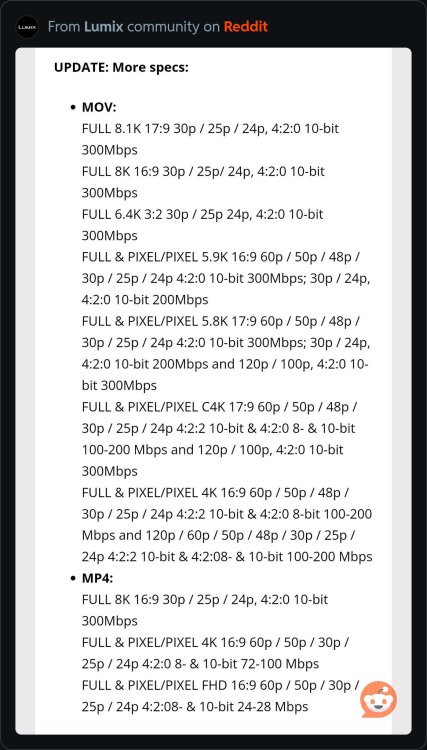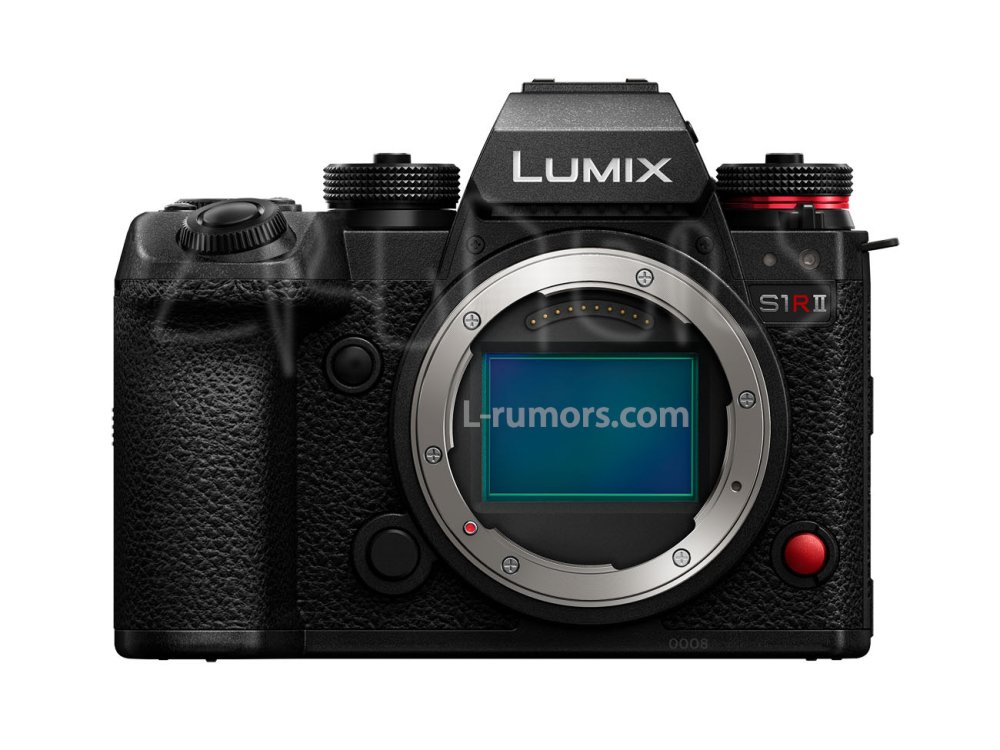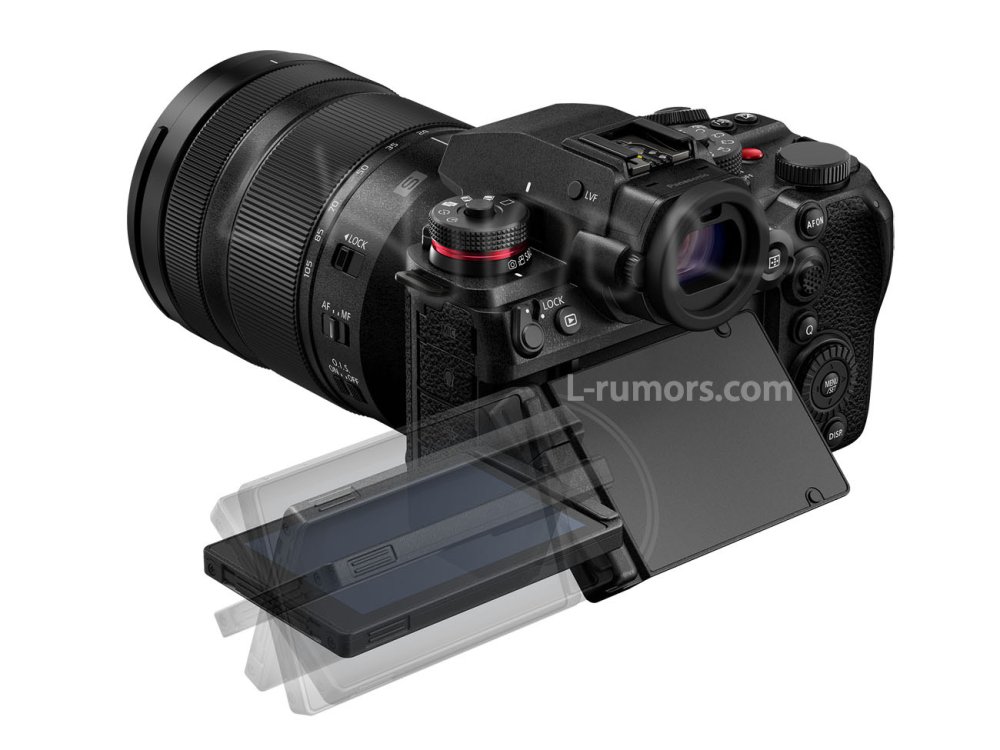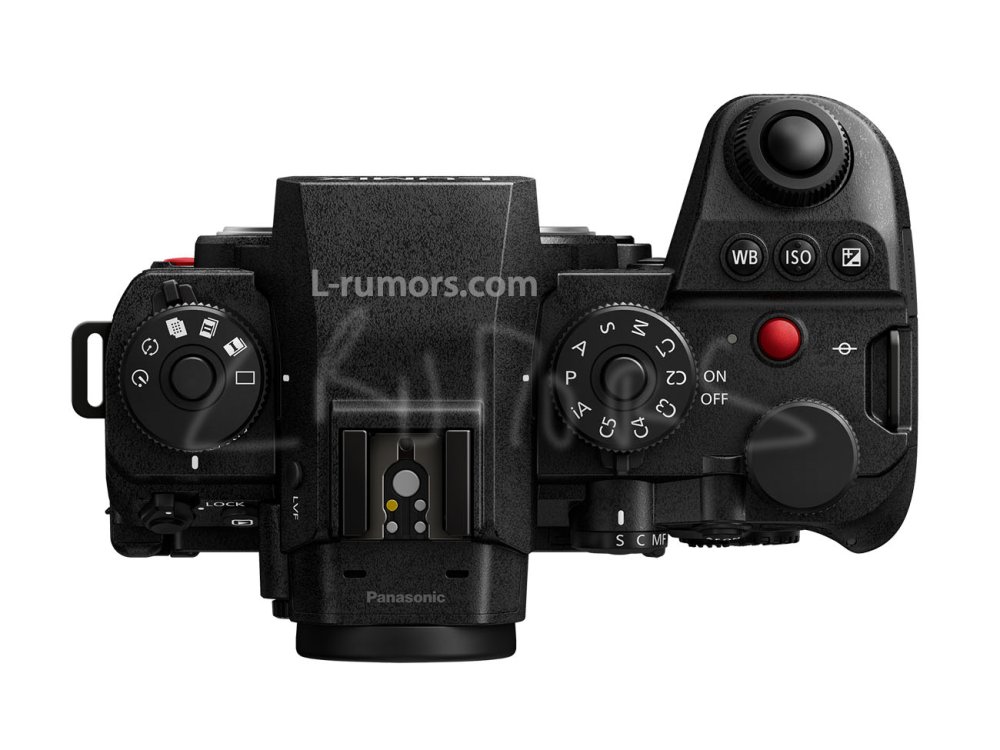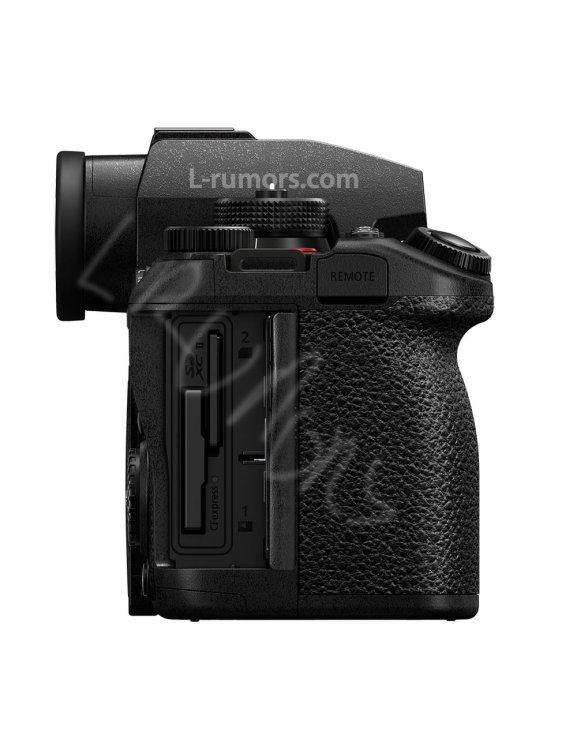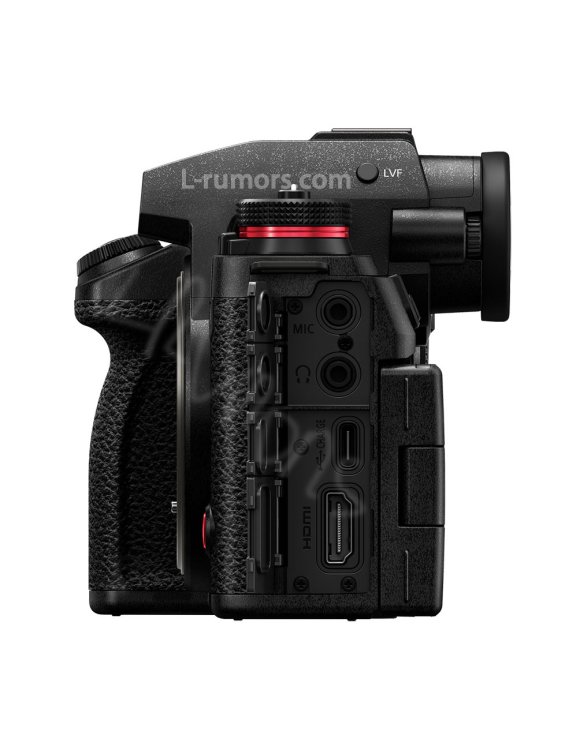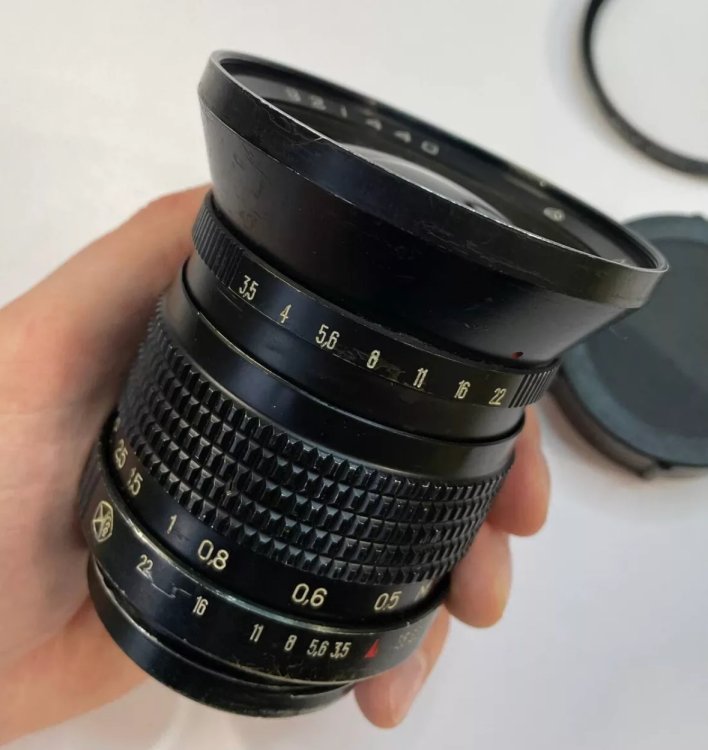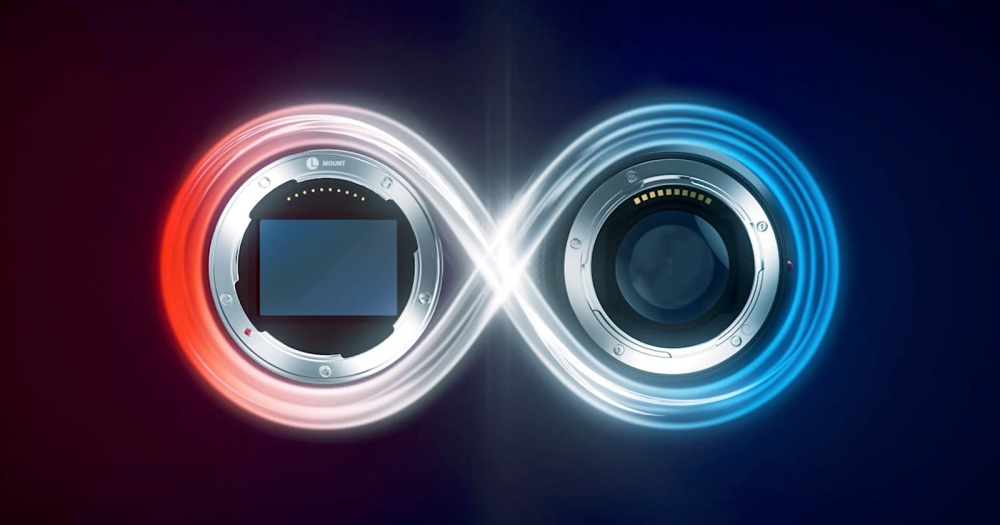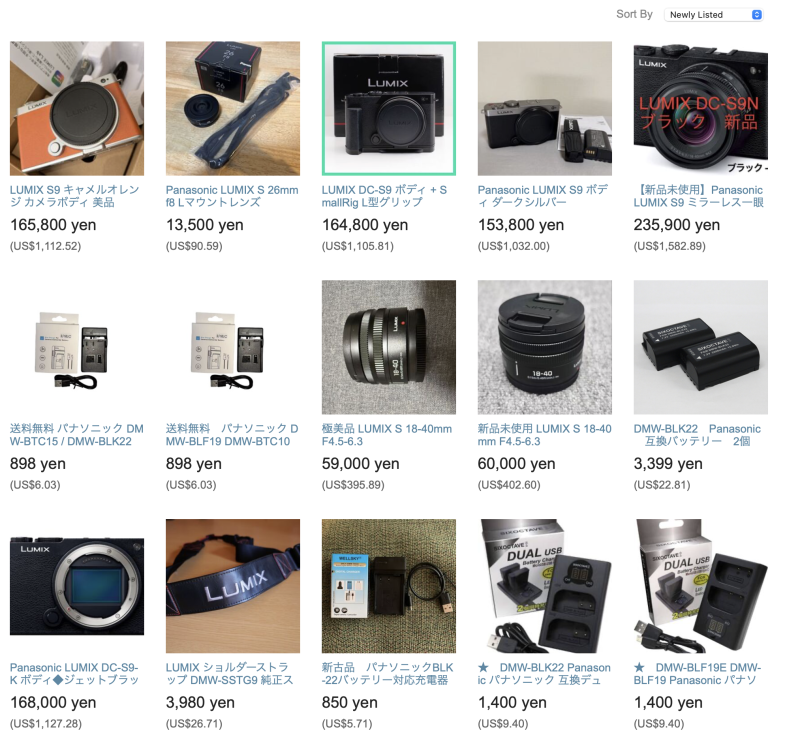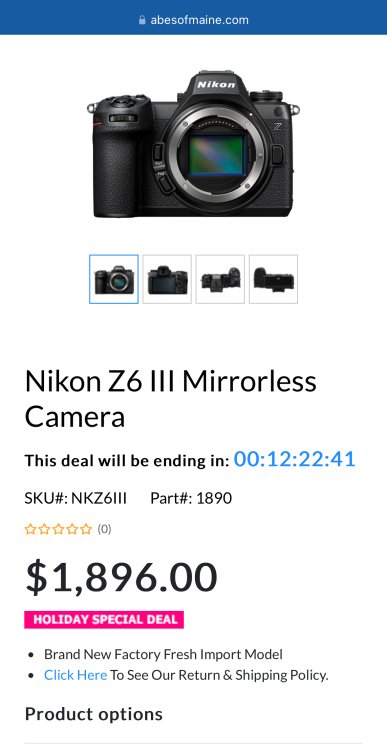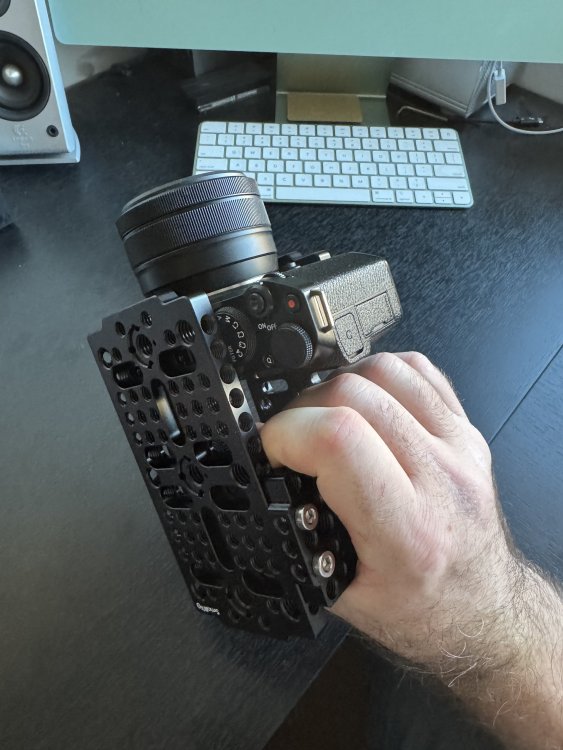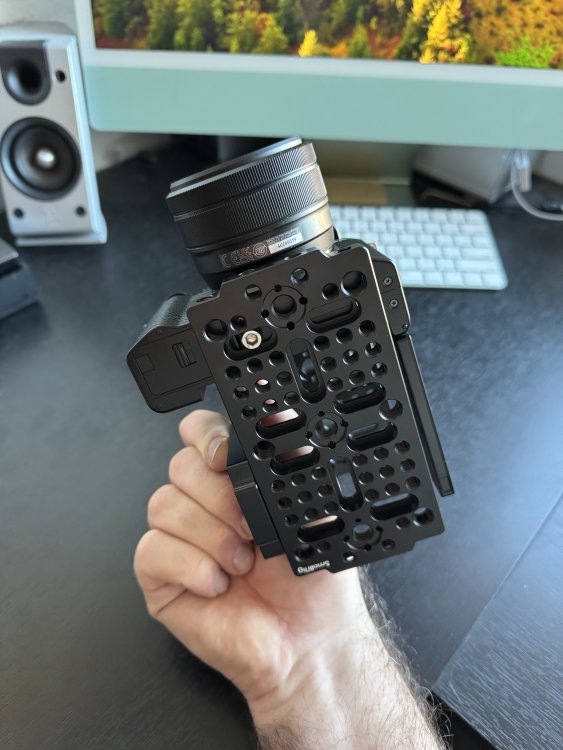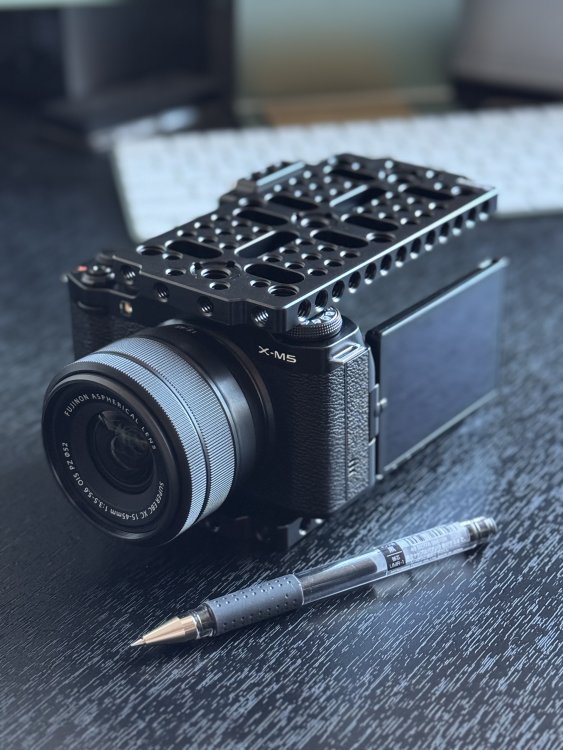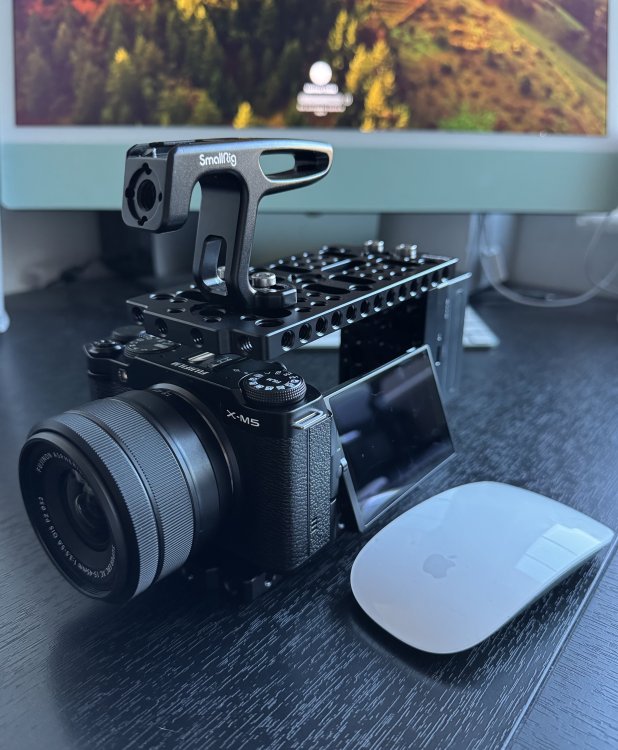
Ninpo33
Members-
Posts
283 -
Joined
-
Last visited
Content Type
Profiles
Forums
Articles
Everything posted by Ninpo33
-
If it’s something filters and technique can’t fix there’s always Kolari. Easy fix for a lot of people on the S5iix https://kolarivision.com/product/olpf-aa-filter-upgrade-for-panasonic-lumix-s1-and-s5-cameras/?srsltid=AfmBOopFsw5dPlgKUes_emPZ2SlZb_WExlwAj5PRubAwVK87j0VeSK6B
-
You do you bro… this scenario is not new or unique you’re describing any basic event or wedding style coverage. If RS is bad for you on a longer focal length you might want to learn how to slow down your movements and be ahead of your subjects slightly. I’ve been shooting video since the early 90’s so I’m old. We didn’t have IBIS and light Mirrorless cameras and have been making it work with no issues. I’ve shot hundreds of weddings and half of them on the 5Dmk2 so yeah, keep telling me how the S5ii is terrible.
-
This is exciting. So glad they broke with the Leica SL-3 specs. The faster readout and lower megapixels should really make this a true hybrid. And priced the same as a used Sony A1… perfect. Panasonic Lumix S1rII images and specs leaked! Lumix S1rII PRESS TEXT (deepl translated) Panasonic introduces the Lumix S1RII, a full-frame mirrorless camera for professional photographers and videographers. The camera has a newly developed 44.3 megapixel BSI CMOS sensor and a powerful L2 processor, which together enable a high level of detail and a wide dynamic range of up to 14 f-stops. The native ISO range extends from ISO 80 to 51,200 and can be extended to ISO 40 to 102,400. Improved autofocus and fast continuous shooting function The phase-hybrid autofocus of the Lumix S1RII utilizes 779 focusing points and AI-supported subject recognition for people, animals, vehicles and other subjects.The camera can take continuous shots at up to 40 frames per second in electronic shutter mode – with continuous focus tracking (AF-C). A pre-burst mode saves images before the actual shutter release so that spontaneous moments are not missed. Functions such as white balance and ISO sensitivity can be accessed directly at the top of the housing via dedicated buttons. Optimized image stabilization and high-resolution photos The camera has internal 5-axis image stabilization on the image sensor (IBIS), which enables compensation of up to 8 f-stops. In combination with a compatible lens and Dual I.S., up to 7 f-stops of stabilization are possible in the telephoto range. For high-resolution images, the Lumix S1RII offers a high-resolution mode that captures eight images with a slightly offset sensor position and composes them into a 177 megapixel file. This mode is available for both JPEG and RAW images and enables detailed results without a tripod. L-rumors.com Advanced video functions with Open Gate and RAW recording For the first time, a Lumix camera offers internal 8K video recording at 30 frames per second. In addition, the Lumix S1RII supports Open Gate recording, which utilizes the entire sensor area in 3:2 format for video recording in 6.4K resolution. This offers filmmakers maximum flexibility in post-production, as they can crop the required aspect ratio (e.g. 16:9, 1:1 or 9:16) later. Panasonic has also announced a firmware update for 2025 that will also enable Open Gate recordings in 8.1K and 7.2K. Apple ProRes RAW HQ can be recorded internally at 5.8K at 30p on CFexpress Type B cards or an SSD hard drive connected via USB. RAW videos can even be output to external recorders in 8K via HDMI. The Lumix S1RII also offers the option of recording a proxy file with a low bit rate in parallel. This is linked to the original video and enables more efficient post-production. Robust protection and other features The robust magnesium alloy housing is protected against dust and splash water and is frost-proof down to -10 °C.The Lumix S1RII also offers new sensor protection: when the camera is switched off, the mechanical shutter can be closed automatically to protect the sensor from dust when the lens is changed. The camera has a 5.76 megapixel OLED viewfinder and a folding and swiveling 3-inch touch display with 1.84 million pixels.Two memory card slots are available for storage: one for CFexpress type B cards and one for SDHC/SDXC (UHS-II) cards. Optimized workflow and enhanced connectivity The Lumix S1RII is the first Lumix system camera to support Capture One Tethering.This enables direct image transfer to a computer. In addition, the camera is compatible with Adobe Camera to Cloud, so that image and video files can be automatically uploaded to the cloud and edited there. Two apps are available for an enhanced user experience: The LUMIX Lab app enables, among other things, the easy transfer, editing and management of LUTs (Look-Up-Tables) to use color styles directly in the camera or on the smartphone. The new LUMIX Flow app supports video productions from planning to editing and offers functions such as automatic sorting of recordings and the use of the smartphone as an external monitor. Price and availability The recommended retail price is €3,599 for the Lumix S1RII without lens and €4,499 for the kit with the 24-105 mm F4 Macro O.I.S. standard zoom. Full Panasonic Lumix S1RII specs (preorder here soon): New 44 MP “high speed” sensor 40fps in electronic shutter 10fps in mechanical shutter 8 stops image stabilization 176 MP High Res with sensor shift…handheld(!) and by combining 8 images. 5.76 megapixel OLED viewfinder 1.5 second pre-capture 8k30p 4K120 without crop 8,1K Open-Gate will be released later with a Firmware Update 6K ProRes RAW HQ internal recording Internal RAW Video Recording: ProRes 422 HQ, ProRes 422 plus Proxy Recording You can record on external SSD via USB-C Frame marker for 2.39:1, 2.35:1, 2.00:1, 1.85:1, 16:9, 4:3, 5:4, 1:1, 4:5, 9:16 and Custom 32 Bit Float audio Multi-Angle-Screen like A9III/A1II Body size about the same of the Lumix S5II(just a tiny bit thicker) Weather-sealed and ventilated RED record button in front of the camera on the corner near the mount red Tally in front and on the back fo the camera Price €3,599 Announcement: Feb 25, 1-2pm London time
-
Everything you’re describing is perfect for a monopod situation. Your description is no different than what most of us deal with several times a day on any event or wedding shoot. Remember that many of us shot things like this before there was any sort of IBIS or OIS at all. You’re complaining about a situation that is only negative for you because you are not using the right tools or technique. To blame the camera is a cop out.
-
Wow, the $1,200 LUMIX up to an Alexa is quite the jump. Yeah, just use your Alexa I guess since your discerning eye can’t deal with all of this rolling shutter on the S5ii. Just terrible, terrible images coming out of the LUMIX cameras these days.
-
Nah, he was right. The phrase “3 singe most…” is really dumb. Plus to say the S5iix is “almost unusable” is also really dumb. That camera is obviously used by thousands of people on a daily basis with very good results. Do you constantly whip pan around while shooting video? RS can be an issue but in real life pro work it’s rarely a problem. For those types of shots you can drop down to S35 or just use a different camera for that shot. That’s one of the reasons we own a Fuji X-H2s but it rarely ends up getting used TBH. Same with moiré, not an issue 90% of the time but if you do shoot a lot of subjects where it’s an issue you can always have an OLP put in by Kolari and you’re good to go.
-
Yeah, I agree. however you don’t use the video aspects like I would need to for my third body so if they bring some solid video aspects to the 2nd gen model I would bite. The first S1R had the mojo in 5k mode but at S35 only. Ideally they could pull off 61mp and good low light video but we’re not there yet technologically. If the rumor is true that they are using a different sensor than the Leica SL3 I guess there is hope for better video. The minimum they can put out in my opinion would be something above 50p stills but a faster sensor or double stacked sensor that can do down sampled 8k and open gate 6k along with full frame 60p. (120p even better) LUMIX is so far behind that we’re basically hoping they catch up to the Nikon Z6iii and A7RV finally. And it has to be below $3,000 or so otherwise it’s just the same as everyone else and showing up 2 years late to the party.
-
I hate to admit it but it’s true. The current S5 line up are all solid and super inexpensive workhorses but starting to loose whatever edge they had. I’m reinvesting in older LUMIX stuff now that things are dirt cheap but mostly looking towards Fuji and Sony for the future. I have 0 native L mount glass so it’s easy to adapt to whatever. if something cool happens next week I’ll reconsider. For now I’m shopping for Soviet Medium Format glass to finish my GFX friendly set.
-
So LUMIX version of A7CR instead of A7RV type thing? I’m all for low cost and the market is trending towards cheaper cameras that’s for sure. I still would hope for a nicer A1 mk1 killer. just saw a clean A1 mk1 sell for $2,800 US last week so that’s going to be tough to beat. You’ve said it before, LUMIX really has to come up with something special to stand out in this current market. A cheaper 50mp $2,000 A7CR equiv might do that.
-
I’m not the only one to suggest this and I’m not saying it based on the sensors. There are quite a few reasons why the relationship might have changed. One, Notice how the brand new Leica SL-3 is the same internal specs as the much older Lumix S5Iix. There was a long gap between the two cameras coming out from each company. And now the 2 new Panasonic versions that will drop next week are going to be different than the Leica counterparts. The S1Rii will have a different sensor and hopefully a faster readout speed and then who knows about the second one? People who are at the LUMIX event however have mentioned that it’s an exciting new camera so maybe the video focused box camera or…???
-
Personally I hope they use the sensor from the A1 and give us 50mp stills and down sampled 8k with amazing IBIS and all the other LUMIX goodies for anamorphic, X-Pan crops and the like…
-
That’s not confirmed, just because people snagged a low res pic from his video it’s totally guessing. He had black tape over the logo but doesn’t mean he was shooting on the new camera. The S5 line was not flagship and cheaper feeling so the two new cameras will probably both be fairly robust and pro flagship quality. (I hope). I would love to see a LUMIX version of the 50mp A1 and a high end box style cinema/video camera.
-
There’s a rumor that the S1Rii that might be announced next week and will have a different sensor that’s in the SL-3. Will be interesting to see where things fall with LUMIX moving forward in 2025. Maybe this is the shift away from the previous partnership? I would love to see Sony give up the 50mp sensor that’s in the original A1. Get a $3,500 version of the A1 from LUMIX here soon? Yes please.
-
Don’t you already have that though with pixel to pixel and S35 modes? Also, Leica has some stellar APSC L mount lenses. What would be the point of making a dedicated APS-C camera at this point in the game?
-
Sure thing. I agree about the Leica tax but I’ve found a few SL2 right at $2,000 now and for me the difference in S1R at $1,300 isn’t very much and is justified by it having the Log profile, Leica styled body and the Leica color science/tuning. I need the high res stills for a magazine project but shoot video so the camera has to do double duty as a B cam for interviews. I would get an S5 AND a S5iix for the $2200 the SL2-S is going for now. Not a good buy in my opinion unless money is no object. But at that point the SL3-S is the way to go.
-
For the genre, that's about right.
-
Another vote for the Lumix S5 if AF isn't a priority. I got mine for $535 and it's a big step up from the GH5 which I sold to get it. I waited long enough in the depreciation cycle that I actually had some money left over after the trade up to full frame. I would combine S5iix with S5 and S9 for a really solid and cheap 3 camera system that gets you most of the 2020's tech advancements but at minimum cost for the image you're getting. If you need high quality stills just swap out the S5 for a Lumix S1R and you're all set. This was my plan before I got swayed into Fuji bodies and a bump up to the GFX medium format system.
-
You just need to go through the spec sheet for each. Beyond the stuff on paper, the main big difference for me is that there is no Log profile for the S1R. Many people have good results with HLG and Flat profiles with the Panasonic however. There is an L-Log profile on both Leica's. Next will be what modes you want to use and if there is 10 bit color for that mode. Beyond that, there is the subtle difference between the way Leica and Panasonic choose to "tune" the sensor. Many people really like the mojo of the Leica, myself included. I'm not a fan of the SL2-S because it really is pretty gimped for the price tag and you are around the image quality of my $535 Lumix S5 o.g. But even the lowly S5 shoots 6k RAW to the Atomos Ninja V and has anamorphic modes. The SL2 at least does 47mp stills and 5k. Full Frame 60p etc... If I had the money I would go 1. SL3-S for A-Cam 2. SL2 for B-Cam 3. Q3 for C-Cam (but probably a Lumix S9 really) I found a great video that was helpful for me to be able to see some subtle differences between the S1R and SL2, let me see if I can find it.
-
Looks like its happening soon... https://petapixel.com/2025/01/21/viltrox-negotiating-to-join-growing-l-mount-alliance/
-
Welcome to the small camera club...!!! Not sure if it works out where you are geographically but I love the Japanese services I use for buying a ton of open box/Gently used stuff. Frequent 10% off coupons and DHL or FedEx shipping for around $20 US. On the used stuff I have yet to pay any import/customs fees but I'm not sure how that goes in France. I have been gate keeping this for a couple of years but am almost maxed out on gear so happy to share. Also, Japan as a culture tends to be quite honest and forthcoming so buying used items/s has been mostly trouble free compared to Ebay in my experience. https://buyee.jp/item/search/query/Lumix S9?sort=cbids&order=a&translationType=98&page=2&conversionType=top_page_search&vic=YahooAuction_DirectSearch There are several services at this website. Yahoo Auctions are cheapest but there's also a "Flea Market" which has less items but great deals. Then several other shops where things are new. My favorite feature is how they will hold stuff at their warehouse for 30 days free while you shop and then you can combine packages into one bigger box and just pay the one shipping fee. Average price on the S9 has been around $1,100 US but I've seen some deals go for $900 at times. I went with the Fuji X-M5 for now but may end up swapping it for an S9 if I end up with a SL2 instead of a GFX100s.
-
Well, The best news from today? I can now scoop up an SL2 for just under $2,000 finally. And I can add a s5iix as my second body and not feel bad about what I’m missing out on LOL. I was really hoping for a preview of what LUMIX will bring in 2025 but instead we get to see more recycled tech
-
Well, SL3-S has recording to SSD and is pretty helpful so really the S5iiX specs, but yeah. Same same mostly.
-
Agreed. And the Z6 iii just went on sale already this week…!!! Panny Boi is really late to the party…!!!
-
Well, my little black X-M5 finally arrived from Japan and wow, it’s tiny. Had some fun rigging it up as a tiny little micro cinema cam today LOL. USB C dummy battery arrives tomorrow and a couple little accessories to mount the Ninja V+ in a way that doesn’t look too ridiculous. Only complaint so far is the smallrig cage for it is a little overpriced and doesn’t come in all black. Just the strange steampunk looking retro vibes.

